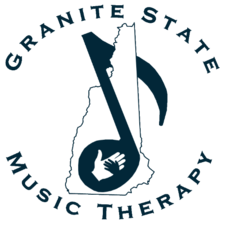Putting the Pieces Back Together: Music Therapy and Brain Injury
Our brains are marvelous yet mysterious things. They are made very efficiently. If we had to think about every single little thing, our brains would be way too big to carry around. So our brains categorize information into different maps that hold not only all kinds of information but also prioritize sequences that we use often and place less importance on sequences we use infrequently.
Naturally Occurring Sequences
Scientists have found that stimulating a part of the brain that controls a certain function will cause an entire sequence of events to occur, not just one isolated movement. For example, when a part of the motor cortex is stimulated, it may start to act out an entire sequence for something very important such as self-feeding mechanisms. Not only does the hand move, but so does the mouth in anticipation, followed by the arm bringing the hand to the mouth. This happens in one smooth, coordinated movement. Another spot in the motor cortex may have the arm coming up and protecting face from something that might be flying towards it. This is another automatic motion and is important as it is a protective reflex. This way, our brain is able to pack a lot of information into a little space. It stores those sequences as efficiently and usefully as possible.
The Effect of Injury
This is all well and good until something goes wrong. If there is damage to one part of the brain, it might affect many areas of a person’s daily life. There are so many things we do automatically that our brains have perfected over time. For example, a person doesn’t study a picture of a carrot and think about how it is orange, oblong in shape, and has feathery green leaves at the end, then decide it is a carrot. They take one look and within seconds can identify it as a carrot. However, if there was damage to that part of the brain, one may be able to look at it and describe it, but would not be able to say what it was. The same goes for walking. One does not often think about lifting up their foot, gauging how long it needs to be suspended in the air, and then place it back on the pavement again. Your brain tells your legs to walk and they know what to do. But if damage was done to that brain map, making smooth coordinated movements while walking suddenly seems like a very daunting task.
How Music Helps
Music has been found to be a wonderful tool to regain some of the functions that could have been lost due to a brain injury. In 1999, Michael Thaut introduced Neurologic Music Therapy (NMT) which is a research based system of standardized techniques that can be used clinically to reach certain goals. Music has such a structure to it, suddenly coordinating all the little movements involved in accomplishing an end goal has a place and a time frame to follow. For example, in 1997 Thaut, Rice, and McIntosh found that a person’s ability to time movements from beginning to end was easier when done to music. They found that when we move to music, it not only gives us a place to start and end, but it also gives us an idea of how to scale our movements in between the beats.
To find out more about neurologic music therapy, click here!
A Takeaway
For someone to suddenly have a brain injury is devastating, and it is imperative that they are able to regain any skills possible that affect their quality of life. Music is intrinsically structured as well as simultaneously normalizing and uplifting. Not only does it start rebuilding neuropathways, but it builds connections and relationships with other people as well. This is an important component of healing holistically.
References:
Wheeler, B. L. (Ed.). (2015). Music Therapy Handbook. The Guilford Press.
Schwarzlose, R. (2021). Brainscapes: The warped, wondrous maps written in your brain - and how they guide you. Mariner Books.
Author: Jenni Chute, MA, MT-BC
Editor: Sonya Imperio, MT-BC
Stay up-to-date with our latest resources!
Sign up for our newsletter!
We value your privacy.






